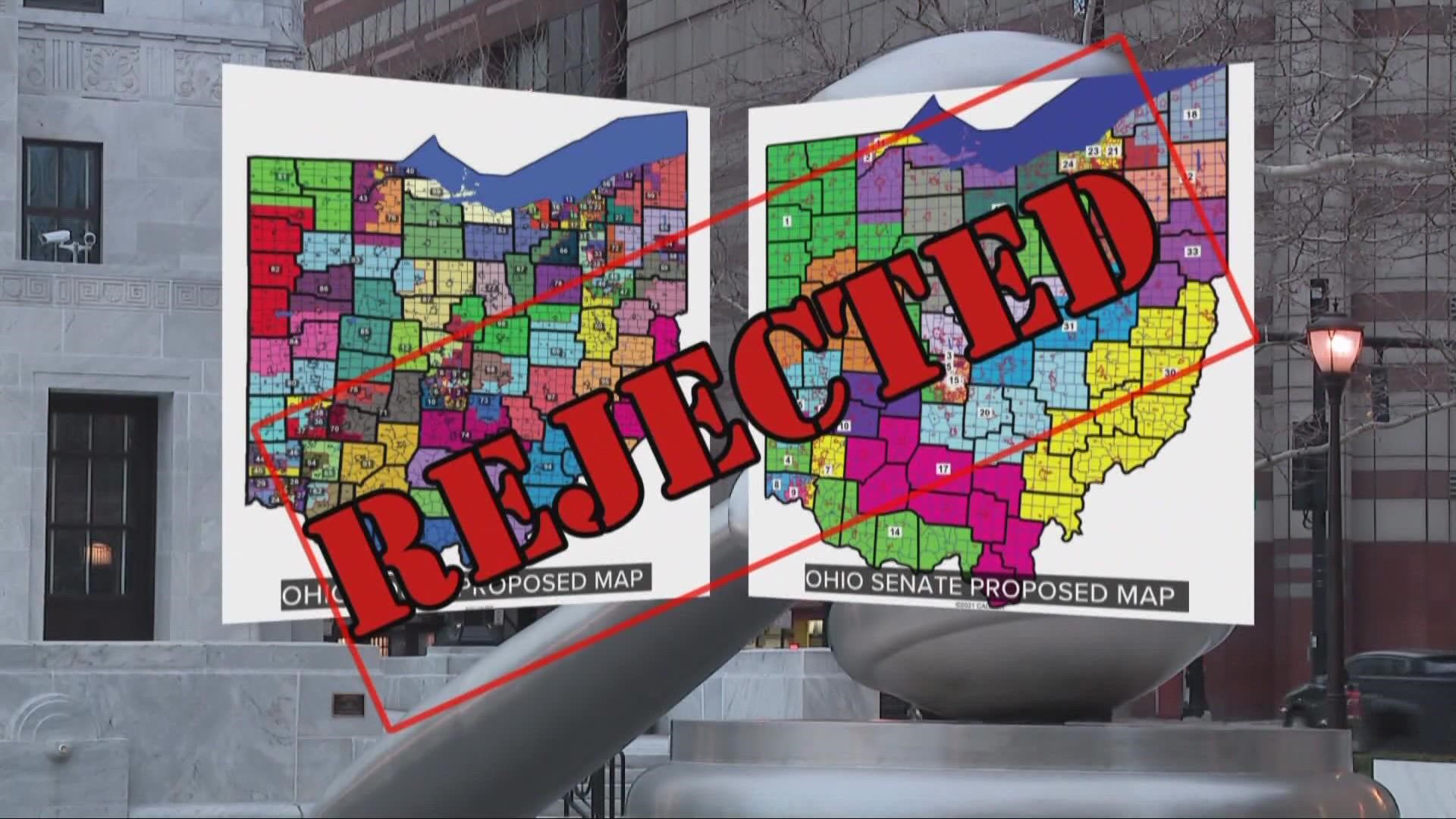COLUMBUS, Ohio — Once the Ohio two-year budget cycle is finished by June 30, Ohio Senate President Matt Huffman expects work to begin again on redistricting for Statehouse maps, with September as a likely date for them, he told reporters last week.
Both Ohio's U.S. Congressional district maps and Statehouse maps were declared unconstitutional gerrymanders multiple times by a bipartisan majority of the former Ohio Supreme Court, but voters were nevertheless forced to vote under them in 2022 after Republicans on the Ohio Redistricting Commission ran out the clock and appealed to a federal court.
With swing vote former Ohio Supreme Court Republican Chief Justice Maureen O'Connor forced to retired due to age, Republicans added partisan labels to the 2022 Ohio Supreme Court races and won a majority of justices. Gov. Mike DeWine then appointed a family friend to an open seat after Justice Sharon Kennedy was elected chief justice.
The new right-wing 4-3 majority on the court is not expected by analysts to have a swing vote on the issue of gerrymandering going forward. O'Connor has called for further anti-gerrymandering reform by Ohio voters, which had passed such reform in 2015 and 2018 with more than 70% of the vote. That system left politicians in charge of the process, however. O'Connor has since called for an independent commission.
Ohio Republicans have also brought a case to the U.S. Supreme Court over the congressional district maps, seeking the court to declare under a theory called "independent state legislature doctrine" that the Ohio General Assembly has total control over the maps and the Ohio Supreme Court does not have jurisdiction.
Because the high court has yet to decide whether or not it will review the case, Huffman told reporters last week that the congressional maps could stay the same for the 2024 election.
"(The congressional map's) a little bit more uncertain, it may simply be that we have the same congressional districts for the 2024 race as the one we have now," Huffman said.
As for the Statehouse maps, it's up to the governor to call the Ohio Redistricting Commission back into session, Huffman said. The commission is made up of a majority of Republican leaders, including the governor, Auditor of State Keith Faber and Secretary of State Frank LaRose, as well as a Republican and Democrat from each chamber of the state legislature.
Huffman — who was on the commission until he and then-House Speaker Bob Cupp removed themselves, saying they were needed for other legislative duties — sees a mid-September date as a likely end date for the Statehouse district discussion.
"The plan in my head … is that we would start in earnest after June 30, have hearings and all of the other negotiations and things that are to be done and to try to have a map by mid-September," Huffman said.
He said he doesn't know "how much all the districts will change" in the General Assembly maps, but action will be needed on them.
One change that could come into play for the Statehouse maps has to do with a recent U.S. Supreme Court decision in an Alabama redistricting case.
In the case, the court upheld a lower court decision that the state had likely violated the Voting Rights Act with a congressional map that had one majority Black district.
Amid redistricting deliberations in Ohio, a staffer who helped draw some of the earliest maps in the process said he was directed to ignore racial data in drawing state districts.
A lawsuit was filed by two Youngstown residents accusing redistricting officials of racial discrimination. The lawsuit did not see further action as maps were redrawn several times, and a federal court ordered the commission to redraw maps after they were used for the 2022 election.
Though the Alabama decision was considered a general win for the Voting Rights Act, it's not clear how much change it will make in Ohio.
"It may prompt the legislature or the commission to approach the redraw differently, but I don't see anything in the lawsuit that necessitates that change," said Yurij Rudensky, senior counsel for the Democracy Program at the Brennan Center for Justice.
The Alabama decision upheld existing Voting Rights Act language that bars states from ignoring demographics.
"If it is such that the conditions on the ground could lock out voters of color from being able to participate in the process … there has to be an eye to how voters of different races are being grouped together," Rudensky said.
Rudensky is also counsel in a lawsuit between the Ohio Organizing Collaborative and the ORC challenging district maps in the state.
A spokesperson for Ohio House Speaker Jason Stephens did not respond to requests for comment on the status of the redistricting process.
Asked whether Gov. Mike DeWine had a plan when it came to redistricting post-budget cycle, a spokesperson said "it is accurate we are focused on the biennial budget due June 30th, as is the General Assembly."
Read more from the Ohio Capital Journal


